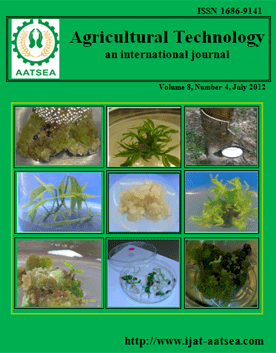ThaiScience
ThaiScience
INTERNATIONAL JOURNAL OF AGRICULTURAL TECHNOLOGY
Volume 16, No. 03, Month MAY, Year 2020, Pages 529 - 544
The enzymatic process of lignocellulosic biomass for second generation bioethanol production, the benefits and challenges: a review
Anindyawati, T., Triwahyuni, E., Maryana, R. and Sudiyani, Y.
Abstract Download PDF
Environmental problems as well as energy security factors are the main reason for studying economic production pathway of renewable energy. Today, production of the second generation bioethanol is widely studied around the world. The production process consists of pretreatment, hydrolysis, fermentation and purification. After pretreatment, the hydrolysis process is the key for cost effective bioethanol production. While biological hydrolysis is better than chemical hydrolysis in many respects, current biological methods are not economical and are time-consuming. Genetic engineering techniques appear to offer potential for cutting production steps and improving efficiency and speed. To this end, a particular set of enzymes, cellulases, has received an intension scrutiny by researchers. Three types of cellulases that have been used to produce glucose monomers synergically are endoglucanase, exoglucanase and β-glucosidase. This review also discuss on how recombinant enzymes can be utilized in enzymatic hydrolysis. Furthermore, the benefits and challenges of the second generation bioethanol production are also explained.
Keywords
lignocellulose, pretreatment, hydrolysis, fermentation, cellulases, bioethanolINTERNATIONAL JOURNAL OF AGRICULTURAL TECHNOLOGY
Published by : Association of Agricultural Technology in Southeast Asia (AATSEA)
Contributions welcome at : http://www.ijat-aatsea.com
